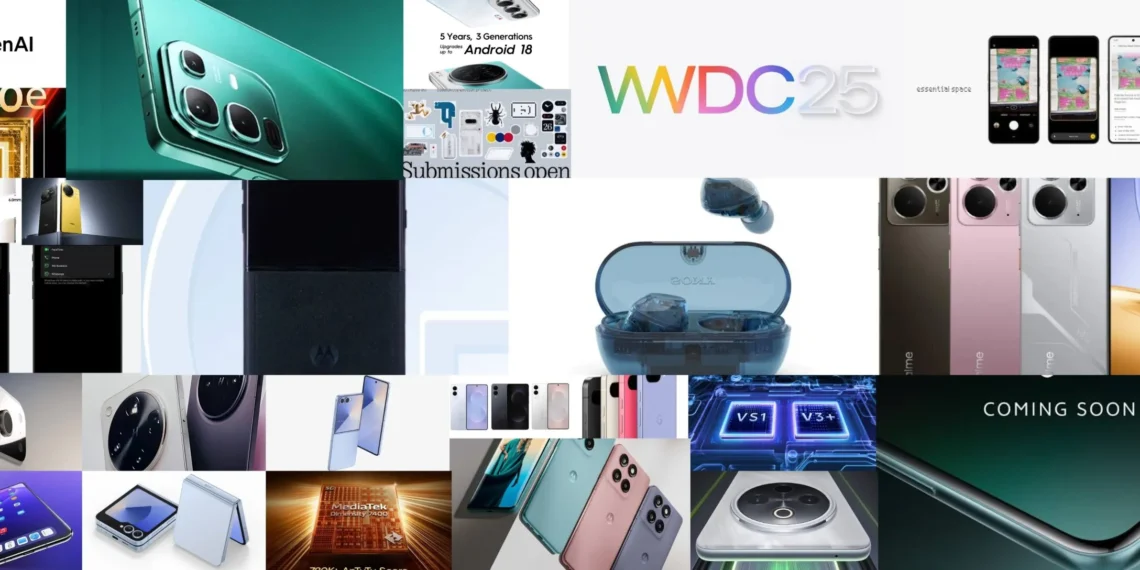Apple is preparing a major rebranding for its operating systems, anticipated to be revealed at WWDC. Instead of traditional version numbers, each OS will reportedly adopt a format tied to upcoming years. This change aims to integrate naming across platforms and simplify the user experience. The update will likely impact iOS, watchOS, and others, starting with versions labeled for 2026.

In addition to new names, Apple is expected to introduce design enhancements across its software. These updates may include revamped icons, redesigned apps, and a fresh visual approach, emphasizing consistency. With Apple’s reputation for user-friendly interfaces, the reaction to these changes will be closely watched when the event begins on June 9.
Key Takeaways
- Apple plans to rename operating systems by year instead of version.
- Redesigns may introduce updated icons and a cohesive design language.
- Announcements are expected at WWDC on June 9.
OnePlus Embraces Artificial Intelligence

OnePlus is taking a bold step forward by integrating significant AI capabilities into its latest phones. Following a light introduction of features earlier this year with the OnePlus 13 launch, the company is now introducing the “Plus Key,” a new button dedicated to enhancing AI-powered functions. Replacing the traditional Alert Slider, this button allows users to assign customizable shortcuts or apps, presenting an interface that mirrors the functionality of Apple’s Action Button.
By default, pressing the Plus Key activates AI Plus Mind, an intelligent tool designed to save and parse information displayed on the screen. For instance, if users come across an advertisement for a concert or an event invitation, pressing the button stores the details in a companion app. The system then extracts relevant data to automatically create calendar entries, eliminating manual effort and ensuring important moments aren’t missed.
The debut of the Plus Key and AI Plus Mind is scheduled for June with the release of the OnePlus 13s in select regions, excluding the United States. These features will later be extended to existing devices in the OnePlus 13 lineup and potentially other models.
OnePlus also has plans for additional AI tools, including AI VoiceScribe, which can record, summarize, and translate conversations; AI Translation, a centralized app for multilingual translation needs; and AI Reframe, a feature that leverages generative AI to tweak photo compositions. This marks a significant transformation for OnePlus as it ventures deeper into the AI landscape, aiming to redefine how users interact with their devices.
Samsung Prepares New Folding Phones
Samsung has announced plans to introduce its next wave of foldable phones, expected to include the Galaxy Z Fold7 and Galaxy Z Flip7, during the summer season. These devices will be the first to feature One UI 8, an updated interface built on Android 16, offering enhanced functionality and fresh design improvements.
Key Features Expected:
- Exclusive Android 16 Launch: The new foldables will mark the debut of Android 16 ahead of competing brands.
- One UI 8 Features: Improved navigation and interface updates tailored for foldable displays.
This change highlights Samsung’s push for innovation, breaking the tradition where Google Pixel devices premiered the latest Android version. With Android 16 arriving earlier than its usual fall timeline, Samsung’s strategy appears focused on delivering cutting-edge technology to its foldable product lineup.
Google Photos Reaches a Decade

Google Photos recently marked its 10th anniversary by introducing new features that enhance user experience. These updates include advanced tools and broader availability for previously exclusive options. For instance, the Reimagine and Auto Frame features, initially exclusive to Pixel 9, are now accessible to more users.

A redesigned editing interface brings simplified navigation. Tools are easier to find, as users can tap specific areas of an image to access related functions. For example, selecting the background enables quick adjustments to the portrait blur effect. A new AI Enhance button combines tools like Magic Eraser with other editing options for streamlined photo editing. This design will arrive on Android in June and is expected on iOS later this year.
Sharing albums has also become more convenient. Users can now generate a QR code to quickly share albums with nearby individuals. These codes can even be printed for events, and anyone scanning them can contribute their own images to the album, making collaboration smoother and more interactive.
These updates highlight Google Photos’ commitment to combining cutting-edge technology with improved usability.
Ricoh Reveals an Updated Compact Camera

Ricoh has introduced the GR IV, the latest upgrade to its compact camera lineup and the direct successor to the popular GR III. The new GR IV maintains the same 18.3mm f/2.8 fixed lens (equivalent to 28mm on a full-frame camera) but now features a redesigned optical setup with seven elements for improved performance. While enthusiasts might wonder about a replacement for the 40mm lens variant, there is no official mention of a GR IVx model yet.
The GR IV comes equipped with a 26-megapixel APS-C sensor, offering a slight resolution increase over the GR III’s 24 megapixels. Other returning features include the built-in neutral density filter, while the exterior sees subtle button changes, though the overall form factor remains familiar. A built-in flash is absent, as was the case with the GR III, but the ISO now tops out at an impressive 204,800, aiding low-light photography. Stabilization has also been upgraded to five-axis coverage from the previous three-axis system, delivering improved handheld shooting capabilities.
Autofocus sees notable improvements, with the addition of face and eye detection tracking, addressing one of the GR III’s shortcomings. This enhancement could appeal to photographers seeking quick, accurate focus in various conditions. The GR IV also prioritizes convenience, offering 53GB of internal storage—a significant addition for users on the go. However, it opts for microSD cards instead of the standard SD, which may divide opinions.
Ricoh plans to release the GR IV in the fall of 2025, with another model featuring a Highlight Diffusion Filter slated for a post-winter launch. It’s worth noting that production of the GR III will cease in July 2025, citing supply chain challenges, though the 40mm GR IIIx will remain available for the time being.
Frequently Asked Questions
What are the standout features of Apple’s revamped OS?
Apple’s operating system rebranding introduces a sleeker interface, improved multitasking capabilities, and enhanced compatibility across devices. Updates focus on streamlining user interaction while boosting system efficiency. Features like a unified control center and refined customization options are also likely to be significant.
How will OnePlus incorporate AI into its devices?
OnePlus is integrating artificial intelligence through tools like enhanced virtual assistants and adaptive features that optimize performance based on usage. The company plans to introduce features such as predictive text capabilities and smart resource allocation to make phone operations smoother and more efficient.
What new developments can users expect from Samsung’s next foldable devices?
Samsung’s upcoming foldable phones promise better hinge durability, thinner designs, and improved screen technology. Consumers can anticipate extended lifespan for folding screens and new functionalities tailored to multitasking and productivity.
Does Apple’s OS redesign involve notable changes in design?
Apple’s OS redesign focuses on modernizing the aesthetic with cleaner visuals, refined icons, and streamlined menus. Emphasis has been placed on achieving a minimalist yet functional design that enhances the overall user experience.
What breakthroughs in AI technology has OnePlus brought to its smartphones?
OnePlus has introduced advancements like AI-driven photography enhancements and smarter battery management systems. Users can expect features that automatically optimize settings to improve app usage, camera performance, and system efficiency.
What features in Samsung’s fold technology have been refined?
Samsung has worked on improving overall durability, reducing screen creases, and enhancing touch sensitivity for its latest foldable devices. Updates may also include faster response times and better integration with apps to maximize the foldable format’s unique benefits.






































Comments 1